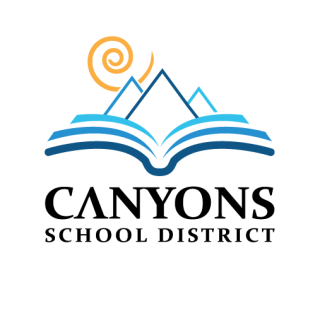Learn how the Canyons School District used Canvas to strengthen teaching and learning during the COVID-19 pandemic and why all stakeholders see the platform as the district’s foundation moving forward.
The Challenge
Canyons School District (CSD) was founded in 2009 when it was separated from Jordan School District and became its own entity. This transition presented several challenges, one of which was building a separate educational technology infrastructure from the system they had been a part of for so many years. After trying out a few self-hosted platforms, the new district selected Canvas in 2012 as its first comprehensive learning management system.
Canvas was mostly used at the middle and high school level upon implementation. The perceptions of Canvas as a tool primarily for secondary teachers and learners existed for many years, creating a divide between the grade levels throughout the district. However, when the pandemic emerged, using Canvas became a top priority for elementary teachers and presented an opportunity to unite the district during a challenging transition to remote learning.
“When it came time to transition to remote learning, we had to address the fact that Canvas wasn’t highly used at our elementary levels. We went from a handful of 4th- and 5th-grade teachers using Canvas to all elementary teachers using Canvas over the course of a few weeks, so we focused our e orts on providing support to those teachers who hadn’t used the tool before and ensuring they had the resources they needed.”
—Justin Andersen, Educational Technology Specialist
Key Insights
Canyons School District helped elementary teachers transition to online learning with Canvas when the COVID-19 pandemic emerged.
Canvas is the central hub for all professional development courses and shareable teacher resources.
Canyons School District plans to continue using Canvas to build a robust blended learning foundation for years to come.
The Solution
Before the pandemic, CSD leaders had advocated for consistent use of Canvas by creating a Canvas Expectations Style Guide to provide teachers throughout the district with the resources they need to develop high-quality, interactive courses.
“I think a lot of stakeholders really began to see the value of Canvas when we had to make that abrupt transition to learning from home. Teachers began using our expectations style guide to ensure parents and students could easily locate the information they needed to keep the learning going.”
—Camille Cole, Educational Technology Specialist Team Lead
Now, more than ever, we are trying to emphasize that the more thoughtful, in-depth use of Canvas was not for the pandemic. Canvas is the base for all teaching and learning. It’s our new foundation.”
Justin Andersen, Educational Technology Specialist
The district’s turning point was seeing the benefit of all stakeholders speaking the same language and coming to the collective realization that teachers can customize Canvas to meet every learner’s needs. Leaders at CSD agreed: Courses must adapt for young learners, and teachers should have the flexibility to personalize learning both at the grade level and student level.
But even the most personalized learning experiences should have a course blueprint as a starting point so teachers can focus less on designing modules and more on selecting high-quality content and creating engaging lessons. To continue keeping everyone on the same page, CSD also began using Canvas as a central hub for shareable teacher resources, course templates, and even professional development.
CSD also created shareable curriculum maps for every subject that become even more vital to keep everyone moving in the same direction, whether face-to-face or online. These maps include helpful resources and instructional priorities for the year. Additionally, leaders have also created “bite-sized PD courses” that allow teachers to deepen their understanding of Canvas and other digital teaching and learning strategies in 30-minute segments.
“We wanted to help teachers see how Canvas can be part of building community outside of the classroom and that Canvas is just an extension of our learning ecosystem. It’s not a replacement.” —Camille Cole, Educational Technology Specialist Team Lead
With schools open again, parents have had the choice to send their students back to the classroom or continue remote learning.
However, CSD expressed the importance of both in-person and online teachers using Canvas daily. Hence, students are better equipped whenever they might have to transition again and to ensure that CSD is providing equitable education to all students.
“Our teachers have started to realize that they need to communicate and reflect what they are doing in the classroom on Canvas, so there is a sense of unity between all teachers, students, and parents.” —Justin Andersen, Educational Technology Specialist
The Results
The use of Canvas at CSD has allowed teachers to focus more on teaching and less on technology.
“Content and pedagogy should always come first, and then you layer in the technology. Helping teachers realize that Canvas should support the work they are doing has been a shift for many.” —Camille Cole, Educational Technology Specialist Team Lead
Of all the changes at CSD since the beginning of the pandemic, one thing has been made clear: Blended learning isn’t going anywhere. Teachers and leaders alike are more aware than ever of how it can bridge some of those gaps in learning and connection amplified over the last year.
Most importantly, Canvas supports the district’s goal of providing an equitable education to every student with the understanding that equity is about more than providing students with a device. It’s about ensuring every student in the district has the same learning access.
Download Case Study
